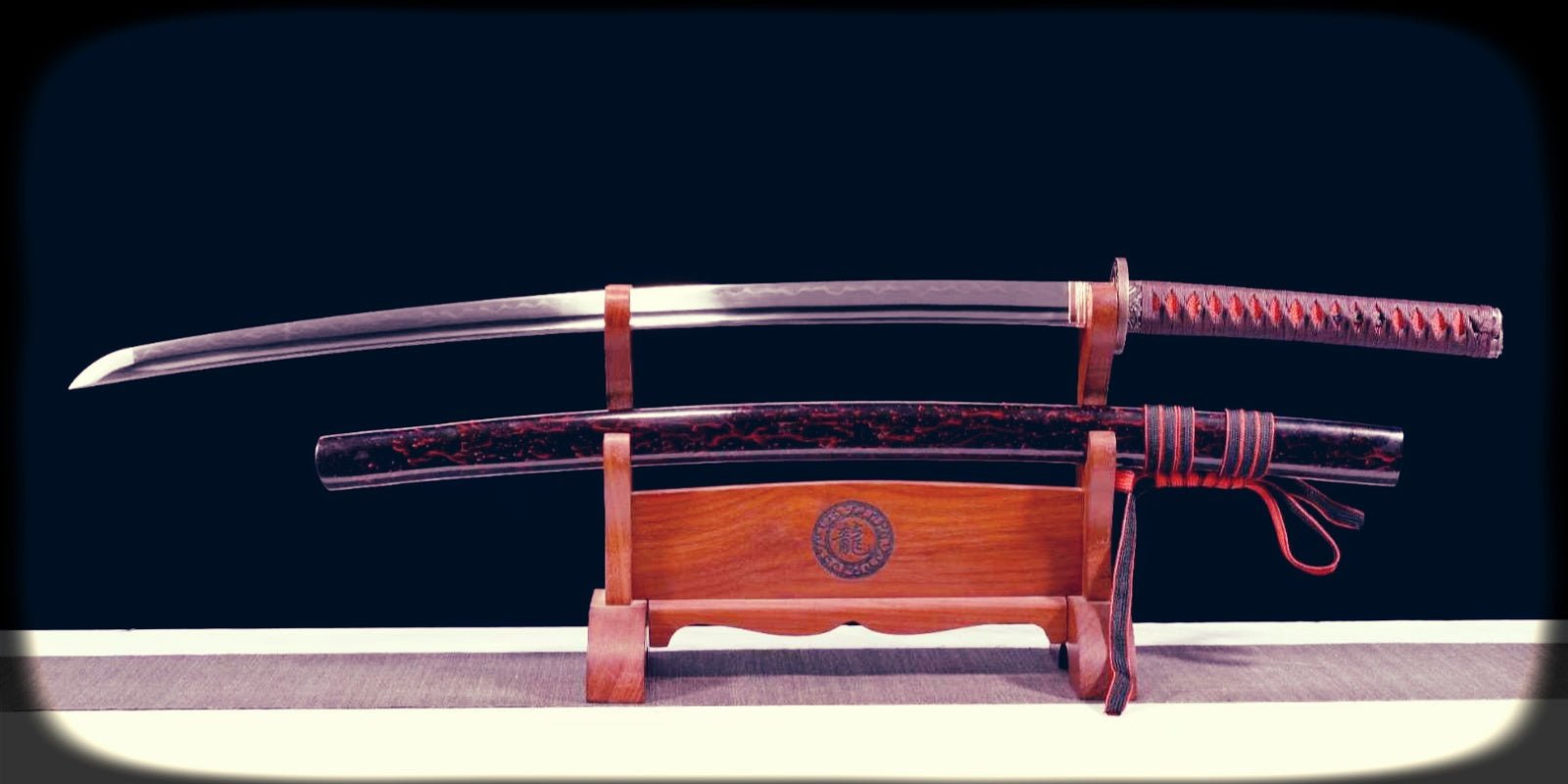Introduction: The Art and History of Katana and Samurai Swords
Katana, wakizashi, tanto, and iaido swords hold significant cultural and historical value as symbols of craftsmanship and warrior ideology. The katana, often revered for its graceful curve and precise blade construction, serves as the epitome of Japanese mastery, created with intricate components such as the tsuba (guard), habaki (blade collar), and the steel blade itself. Wakizashi and tanto swords complement the katana, showcasing versatility and practicality in combat and ceremonial use. Owning an authentic wakizashi or authentic tanto requires care and knowledge of proper maintenance to protect swords from rust. Custom sword collectors often seek authentic designs with flawless blade preservation techniques.
Understanding the Types of Samurai Swords and Their Features
Samurai swords are diverse and distinct, each designed for specific purposes and highlighting intricate craftsmanship. The katana, with its curved blade and long grip, is the quintessential weapon of samurai warriors. Key components of a katana include the tsuka (handle), tang, and the sharp-edged blade. Maintaining katana blades, especially when dealing with authentic katana replicas, requires proper cleaning and protection from rust through regular oiling.
The wakizashi, known as a companion sword to the katana, is shorter and often worn alongside it. Authentic wakizashi exemplify elegance and utility in close combat. The tanto, a smaller blade used for precision or ceremonial purposes, showcases unparalleled finesse. Collectors may also opt for custom swords, including iaido swords, which are tailored for practice.
The Anatomy of a Katana: Key Parts and Terminology
A katana, whether a custom sword or an authentic wakizashi, tanto, or iaido sword, consists of intricately crafted components that contribute to its functionality and aesthetic appeal. Understanding the anatomy aids collectors in evaluating quality and learning how to maintain katana blades and protect swords from rust.
Key Parts of a Katana
- Nakago (Tang): The unsharpened part of the blade secured within the handle.
- Tsuka (Handle): Traditionally wrapped for grip and aesthetic purposes.
- Saya (Scabbard): Protective sheath made from wood, preventing blade corrosion.
- Tsuba (Guard): Often ornately designed, separating the blade and handle.
- Hamon (Temper Line): A visual mark indicating blade hardening patterns.
- Kissaki (Tip): The pointed end vital for cutting precision.
Understanding these elements helps collectors appreciate the craftsmanship behind each katana.
Historical Significance and Cultural Importance of Samurai Swords
Samurai swords, such as the katana, wakizashi, and tanto, hold profound historical significance and are deeply rooted in Japanese tradition. The katana, with its curved blade and precise craftsmanship, symbolized a samurai’s honor and duty. The wakizashi, known as the companion sword, was often paired with the katana, forming the daisho—a representation of a samurai’s social status. The authentic tanto, originally used as a utility blade or dagger, evolved as both a weapon and a token of personal defense.
The iaido sword is integral in the martial art of iaido, which emphasizes discipline and mental clarity. Rituals surrounding swordsmithing showcased meticulous artistry, reflected in custom swords, their mounts, and embellishments. Understanding the components of a katana—blade, tsuba (handguard), and tsuka (handle)—sheds light on the balance between function and aesthetics. Proper care, including learning how to maintain your katana blades and protect swords from rust, preserves their legacy. As cornerstones of Japan’s cultural identity, these swords connect history, craftsmanship, and the spirit of the samurai.
Differentiating Between Decorative and Functional Katana
Understanding the distinction between decorative and functional katana is crucial for collectors and practitioners of iaido sword techniques. Authentic wakizashi, authentic tanto, and the components of a katana vary significantly based on their intended use. Functional swords are crafted with high-quality, durable blades, often tempered steel, suitable for cutting practice or iaido forms. Proper maintenance of such katana blades, including how to protect swords from rust, is essential.
Conversely, decorative katana prioritize aesthetics over usability, featuring custom sword designs and ornate fittings. These are intended for display rather than utility. Ensuring clarity in purpose helps collectors maintain balance in their acquisitions.
How to Identify Authentic and Quality Samurai Swords
When evaluating authentic wakizashi, authentic tanto, or even custom Iaido swords, collectors must examine several critical aspects. Identifying genuine craftsmanship begins with understanding the components of a katana, including the blade, hamon (temper line), tang (nakago), and tsuka (handle).
Look for traditional forging techniques such as tamahagane steel, which ensures strength and durability. Inspect the blade for its curvature and sharpness, noting the hamon for unique patterns created during the hardening process. High-quality swords often possess intricate details on the tsuba (guard) and tsuka, showcasing artisanal precision.
Proper maintenance, including understanding how to maintain your katana blades and protect swords from rust, is essential to preserving authenticity. Investing in recognized smiths or certified dealers can ensure quality in both wakizashi and tanto collections.
Tips for Starting Your Katana Collection on Any Budget
Starting a katana collection—be it authentic wakizashi, tanto, or iaido swords—requires understanding of quality and careful budgeting. Beginners should start small before progressing to high-end custom swords. Examine the components of a katana, including the blade, tsuka (handle), and tsuba (guard). This ensures you identify authentic pieces.
Research is essential; learn how to maintain your katana blades and protect swords from rust. Beginners may consider replicas to avoid overinvestment while honing their knowledge. For affordable authentic wakizashi or tanto, explore auctions, secondhand markets, or trusted artisans. Gradually upgrade as your expertise grows within this timeless art.
Care and Maintenance: Preserving the Beauty of Your Collection
Proper care is essential to maintain the longevity and aesthetic appeal of your katana collection, including wakizashi, tanto, and iaido swords. Regular maintenance prevents rusting and ensures the blades remain in pristine condition. The components of a katana, including the blade, tsuka (handle), and saya (scabbard), require periodic inspection and cleaning.
Tips for Maintenance:
- Clean Blades Regularly Use a soft cloth and high-grade choji oil to clean authentic wakizashi, tanto, and custom sword blades to prevent oxidation.
- Protect From Rust Store swords in a cool, dry environment to safeguard against moisture, which can lead to rust.
- Handle Carefully Avoid touching the blade directly as skin oils can damage the steel. Use gloves when handling.
Routine care preserves your swords' value and historical significance.
Where to Buy: Trusted Sellers, Auctions, and Marketplace Advice
For collectors seeking authentic wakizashi, tanto, or iaido swords, selecting a reliable seller is essential. Trusted sources include specialty sword retailers, reputable auctions, and established online marketplaces such as KatanaSwordArt in Australia. When purchasing a katana or its variants, evaluate the components of a katana—such as the blade, handle, and fittings—to ensure authenticity. Custom sword makers often provide certification of their craftsmanship.
To protect swords from rust, inquire about advice on how to maintain your katana blades, including cleaning kits and storage methods. Online platforms should be vetted for seller reviews, return policies, and transparency before any transaction.
Legal Considerations When Collecting Samurai Swords
Understanding legal regulations is crucial for enthusiasts collecting authentic wakizashi, tanto, iaido swords, or custom swords. Laws governing katana ownership may vary based on a collector’s region, making research vital before acquiring blades. Countries like the United States generally permit sword ownership, but import restrictions or concealed weapon laws might apply. In Japan, antique katana or blades must often be registered, ensuring preservation of cultural heritage.
Key considerations include distinguishing antique swords from replicas, ensuring compliance with import/export guidelines, and determining whether particular regulations address how to maintain your katana blades and protect swords from rust. Collectors must verify local laws prohibiting carrying blades in public or possessing certain sword types.
Building Knowledge: Recommended Resources, Books, and Communities
For enthusiasts delving into the world of the wakizashi, tanto, katana, and iaido sword collecting, credible sources are essential for understanding blade authenticity, craftsmanship, and maintenance techniques. Several key resources and communities provide invaluable insights on topics like distinguishing an authentic wakizashi or tanto, identifying the components of a katana, learning how to maintain katana blades, and protecting swords from rust.
Recommended Books:
- The Craft of the Japanese Sword by Leon and Hiroko Kapp: A deep dive into swordsmithing techniques.
- The Samurai Sword: Spirit, Strategy, and Techniques by Kohshin Sato: Covers history, care, and martial arts applications.
- Japanese Swordsmanship: Technique and Practice by Gordon Warner and Donn Draeger: Useful for iaido practitioners.
Online Communities:
- Nihonto Message Board: A forum for discussing traditional and custom sword collections.
- Reddit’s /r/SWORDS: Practical advice for newcomers in sword restoration and maintenance.
- Martial Arts Forums: Spaces for iaido enthusiasts to share tips and tools.
Additional Resources:
- Subscribe to YouTube channels led by swordsmiths or iaido experts.
- Visit museums or exhibitions showcasing authentic tanto and katana blades to observe details firsthand.
- Join clubs or sword-collecting groups to network and exchange preservation techniques.
Conclusion: Embarking on Your Journey as a Katana Collector
For aspiring katana collectors, understanding the finer details of the wakizashi, tanto, and iaido sword, alongside their historical and cultural significance, marks the first step toward a fulfilling journey. Familiarity with the components of a katana, such as the blade, saya, and tsuka, is essential, whether one desires an authentic wakizashi, authentic tanto, or a high-quality custom sword. Consistent care, including how to maintain your katana blades and protect swords from rust, ensures longevity and value retention. With dedication, collectors can refine their expertise while honoring the craftsmanship that defines these timeless weapons.

